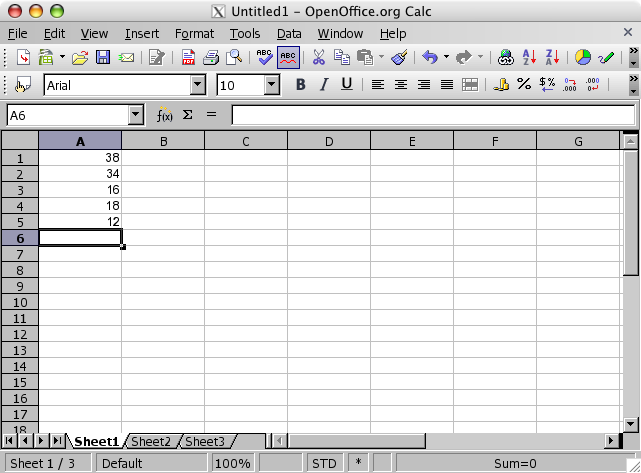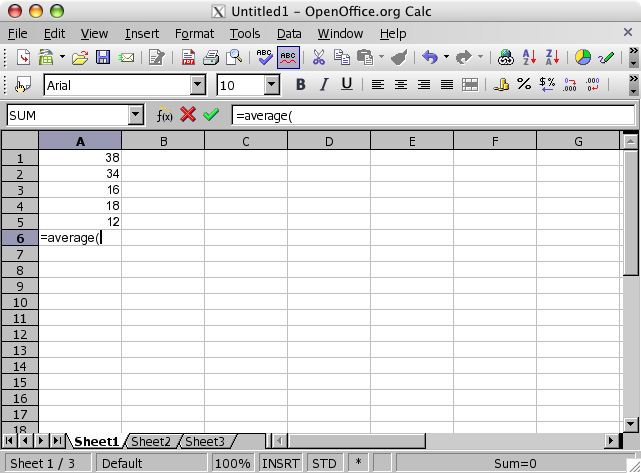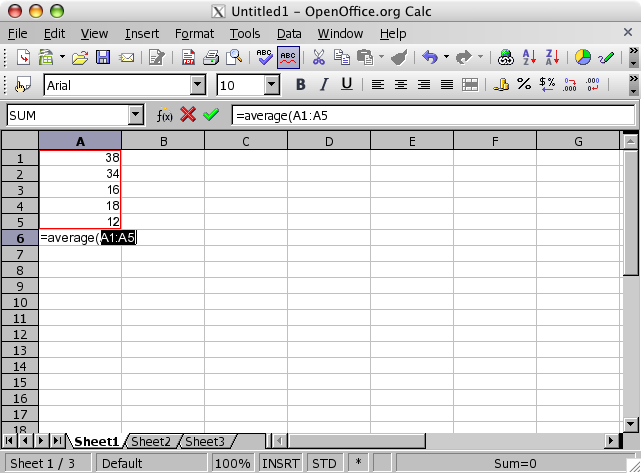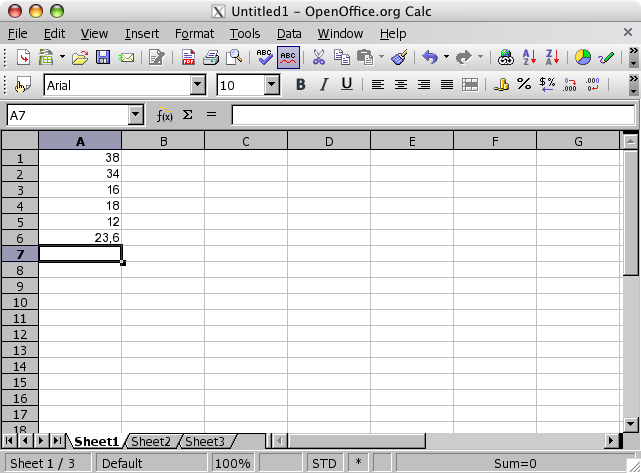< Previous lesson | Overview | Next lesson >
Average Joe
The second formula
Now, we could of course turn the notch up a bit, now that we know how formulas work, and go to a harder formula -- but we won't. We'll do a similar formula to =sum(), which is =average().
This formula works in exactly the same manner as =sum() -- it is built the same way, has the same criterions and parameters. The only difference in these two formulas, is what the outcome is. You now know that =sum() give you the sum of any number of, eh, numbers. If you can guess what the =average() formula does, please mail here, and receive a brand new car as a prize... Yes, it gives you the average of any number of, eh, numbers!
This is very typical for Calc, in that similar formulas are also very similar to use. This makes it very much easier to learn new formulas -- you only have to learn the new formula name, and use the syntax (= the way that the formula want its input formated) from the similar formula that you already know.
Why don't we just use the same figures as last time? Like this:
Now, type =average( and remember not to complete the parenthesis:
Click and drag from the cell A1 to cell A5, like below:
If you now press [enter] to finnish the editing of the formula. Pardon? You on the back, speak up, please! Did I forget to enter the final parenthesis? Hm, yes, you're right. But did we get an error? Nope, Calc guessed that we had finished editing the formula and actually completed the formula for us! If you happened to notice my "error" and put the end parenthesis yourself, you ended up with exactly the same result.
Please see the lesson for =sum() for further details on the =average() formula, as they are almost identical in almost every aspect.